It’s got to be lonely — hunched over a pile of tater tots, surrounded by friends who are also blindly stabbing at their plates, eyes only on the scroll. The loudest sounds come from the clatter of dishes at the wash station of this massive cafeteria. The sunlight filtering in from the grand, arched panes dapples the crowns of these highschoolers’ bent heads.
There is some chit chat. But it’s disjointed. Sentence fragments forming a half-focused attempt at connection.
We’ve all seen it — masses of young people captivated by the screen, engrossed in the lives of strangers, tethered mainly to other’s lives through incessant Snapstreaks or quick Instagram replies.
And the truth is, we’ve all felt it ourselves. The siren call of the screen is loud, even for adults. The steady trickle of dopamine it doses out captures our attention and holds on tight.
In fact, considering ⅓ of adults in the U.S. report being online almost constantly, it’s hardly a surprise that 13-18 year-olds spend over 8 hours a day outside of school on screens.
Not all of that screen time is bad for them. Some of it is necessary and undeniably good. But we now know that much of it is bad. Devastatingly bad.
Any adult with a child in their lives certainly cares. Educators, community leaders, government, and medical organizations are well aware that something is terribly wrong. But what about the kids?
They don’t know any other world. For them, technology has always been inches from their fingertips. Do they see it and feel it? Do they see a way out once they are in so deep?
We’re Talking About a Revolution
By 1977, a third of Americans were smokers and most high schools had smoking areas for the 29 percent of high school seniors who reported smoking daily.
In the face of that public health crisis, The American Cancer Society launched a campaign to educate American school children about smoking. Imagine tens of millions of school children arriving home from school in November 1977 armed with the facts — an especially persistent advocacy group embedded right in American homes, lobbying the adults in their lives to join The Great American Smokeout.
I remember it vividly. I was in the 3rd grade. I had seen the images of the charred lungs flayed open to show the devastation cigarettes wreaked upon the now-deceased. I was on a mission.
I walked into my house and made a beeline for my father, a Marlboro Man. I began a persistent campaign that I believed would save me and my siblings from becoming orphans. I also made the decision, long before I was offered a smoke that it was not for me.
I was not alone.

By 1992, the CDC reported that the campaign had a profound impact on the behavior of smokers. During the Great American Smokeout that year, “an estimated 3.3 million (7.1%) smokers reported quitting, and 7.5 million (16.4%) reported reducing the number of cigarettes smoked on that day.” While tobacco use is still the leading cause of preventable disease, according to the CDC, the percentage of Americans who smoke had dropped to 11.5% as of 2021.
The threat that social media poses to youth mental health is disturbingly similar. Just as tobacco products carry a Surgeon General warning, the U.S. Surgeon General recently issued a public health advisory regarding the risks posed by social media to youth mental health.
Backed by a mountain of data, he called for, “urgent action by policymakers, technology companies, researchers, families, and young people alike to gain a better understanding of the full impact of social media use, maximize the benefits and minimize the harms of social media platforms, and create safer, healthier online environments to protect children.”
Fortunately, the parallels between tobacco and social media don’t end with the concerns.
Kids Recognize the Harm
In early 2023, a parent leader and two faculty members from Culver Academies — an Indiana boarding school with 850 students grades 9-12—reached out to Gabb about supporting a school-wide initiative to examine students’ use of technology.
During the Fall of 2022, fifty student leaders had begun meeting regularly with faculty advisors about the problem. The kids determined that their smartphones were placing demands on their attention that were interfering with their goals, their friendships, and their wellbeing.
Gabb jumped at the opportunity. We were interested in finding out what happens when high school students make modifications to their smartphone use. How would this impact their mental health, social connections, grades, and their sleep?
Candidly, we expected the answers to those questions to provide yet another data-backed voice speaking out on the harm kids are being exposed to daily. And while the study data does affirm all the shocking concerns being raised by other experts, what we actually came away feeling was optimism. Why?
The kids.
In these discussions, the adults in the room repeatedly marveled that very few Culver students argued that they were not experiencing at least some harm from the amount of time they spent on their phones and the type of interactions and content they were accessing. They were seeing the problem, feeling it, wanting to fix it.
And they’re probably the only ones who actually can.
The Study: A Phone Fast
In an effort to mitigate the negative impact screen time was having on them, the Culver student leaders came up with a list of ways they could lessen their dependence on technology during a 30-day experiment.
Phone Fast Options
- Leave phone at home
- Black & white screen
- Delete notifications
- Delete social media
- Switch to Gabb Phone Plus
- Switch to flip phone
- No phone at all
Gabb offered to conduct the study in partnership with Dr. Ashley Kuchar—an expert in educational psychology—as well as offering to provide a Gabb Phone Plus and service for any students who wanted to try that option.
There was a nervous energy on campus as students anticipated making these changes. It was difficult for many to imagine life without constantly checking social media. Kids joked about how they were really going to understand how their parents grew up in the olden days, and there was some degree of worry about being “disconnected” from social groups, teams, and friends.
Out of a student body of 850 students, 130 chose to relinquish their smart devices and go Gabb. They turned in their own smartphones to school personnel and, along with their classmates, began an experiment that would profoundly impact them.
Gathering the Data
Students were surveyed at three different time points during the study and data relating to time spent on social media, health, wellbeing, and academic performance was collected at all three time points:
- Pre-test: 1-week prior to the start of the phone fast
- Post-test: 1-week after the phone fast had ended
- Follow-up: 2-months after the phone fast had ended
At post-test and follow-up, students were also asked to report their perceived impact of the phone fast on several of these outcomes using a 7-point Likert scale (1-extremely negative, 7-extremely positive).
We measured the effects of the phone fast on students who used Gabb devices compared to those who participated in other ways (e.g. no phone or no notification). Open-ended questions were also used to gather information about students’ experiences.
The Results?
Full results are presented below but, generally speaking, the data showed that the phone fast had an overall positive effect at post-test and follow-up for those who participated in any way.
The qualitative data showed that students left the study actively self-reflecting and identifying unhealthy attachments, a skewed worldview, and flawed perceptions of friendship. Qualitative data also showed results of statistical significance for improved mental health and healthy connection with peers — just within 30 days.
While many students reported picking up some old habits once they got their phones back, only 28% told us they’d failed to keep any of the positive habits they adopted during the fast. More than 1 in 4 (28%) reported limiting or deleting social media and 24% were limiting screen time even two months after the fast ended.
The bottom line: the experiment gave these kids the space to recognize they had an unhealthy relationship with their phones so they had a chance to intentionally make better choices.
The “Gabb Effect”
We were happy to see that those who chose to use Gabb Phone Plus during the fast rated their experience as even more positive than those who participated in other ways. For a full breakdown of the unique impact experienced by students who chose to use Gabb Phone Plus for their fast, see this article.
Getting Their Smartphones Back
On the last day of the phone fast, we got a call from a teacher who was walking across campus and fell in step with a student on her way to return her Gabb device. The 14-year-old shared, “I feel stressed. I don’t want to get my smartphone back.”
We heard the same on surveys and during interviews. Many shared that although they were excited to get their old phones back, they had a significant increase in anxiety.
One student put it this way: “I felt a wave of anxiety come over me. I knew I was going to get my phone back and have this whole other ‘job’ to do.”
Another remembered, “The first day I got it back and I was on my phone basically for the rest of my night. And I was like, this is not good. Why am I back on my phone? I don’t like my phone. I don’t want to be on it. But I felt like I had to tell everybody [on social] that I’m back and all of that stuff. I felt so much more stressed. 100%. I felt like a weight of stress.”
Reflections Two-Months Later: Old Ways and New Beginnings
When we met with participants two months after the phone fast, they all spoke about the experience in terms of “before and after.” Clearly, the experiment had provided a paradigm shift that led to profound realizations about how they had been interacting with their phones.
Changing their Relationship with Social Media
For some, the experience has changed the way they use social media. Almost every student jumped back on to the same platforms, but several told us that after a few weeks, they could tell they didn’t like how they felt. And because they had experienced life away from all that, they could tell the difference.
28% of participants ultimately deleted or limited social media by two months after the phone fast. They seemed more interested in being present in real life.
One student shared, “I . . . never post on Snapchat or anything like that anymore because I don’t really care about it. If I’m making memories with my friends, then that’s all that really matters.”
Several participants discussed how having a Gabb phone for even a short time has impacted the way they view Snapchat, in particular. Before the experiment, keeping Snapstreaks going and checking notifications were perhaps more important than the platform’s ability to group text.
One Senior who chose to use Gabb during the fast said it best, “I don’t really care about [Snapstreaks] anymore. I used to care about that…[but] why should I believe that whoever’s number one on my best friend’s list is actually my best friend? That’s stupid.”
She went on to describe her realization that even though she had shared her new Gabb phone number with all of her contacts on Snapchat prior to the phone fast, not one of the hundreds of her acquaintances from the platform ever contacted her on her Gabb device.
“I realized that all of those people I thought were my friends, really weren’t. And I’m OK with that.”
Here’s What We Learned
If we give kids a chance to live a different way, to pause and see the difference, they get it.
In almost every focus group and interview, we heard that kids wanted the autonomy to make their own decisions, but were relying on the adults in their lives to set boundaries. They expressed how they want to connect, to make goals, and achieve them.
Resoundingly, they were disgusted with how social media platforms had been turning them into a product, selling their information and profiting from their attention.
A campus of 850 students is an admittedly small sample size. But what’s happening at this Midwestern high school is not an exception.
In 2023, many local outlets and national publications ranging from CNBC to The Atlantic and Fast Company reported on the growing “dumb phone” trend among Gen Z. It’s clear that kids are feeling the pain caused by social media. It’s clear they want to push back. What’s unclear is whether they’ll succeed.
The pull is strong. We know this as adults. The companies built around these technologies aren’t full of evil geniuses, but they are run by people extremely adept at keeping our eyes where they want them.
I think our kids are equal to the task but, of course, I can’t say for certain. What I can say for certain is that I walked away from that campus with a lot of hope.
These kids lit a fire in me. What started as a conversation between student and adult leaders led to an experiment that provided hundreds of kids with something simple but absolutely crucial: a chance to catch their breath.
Is that enough? Are other kids going to be willing to try living in a different way than this social-media-soaked culture they’ve inherited? Is this generation capable of leading a revolution on par with The Great American Smokeout?
I believe so. I believe we have every reason to look at the children in our own lives and believe that they will also notice, if we give them a chance.





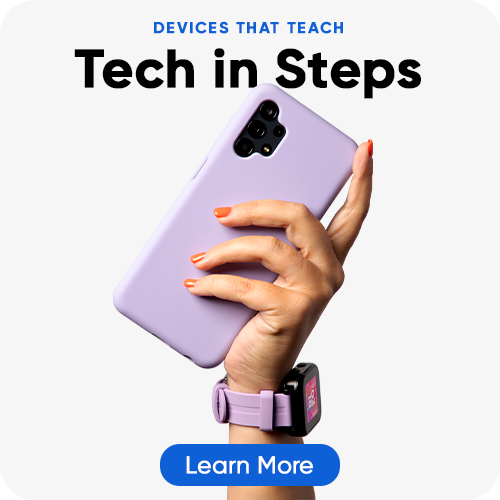







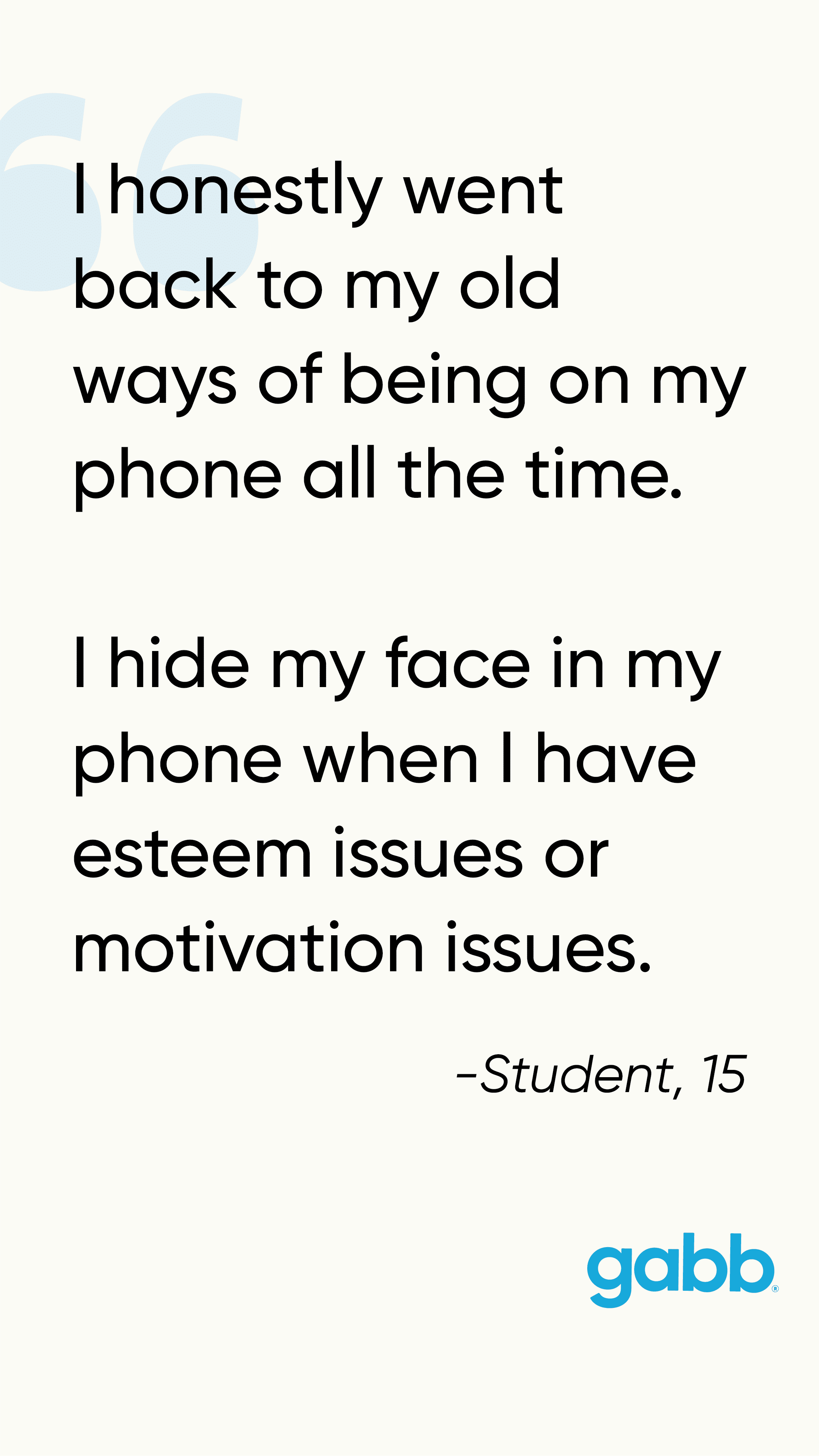
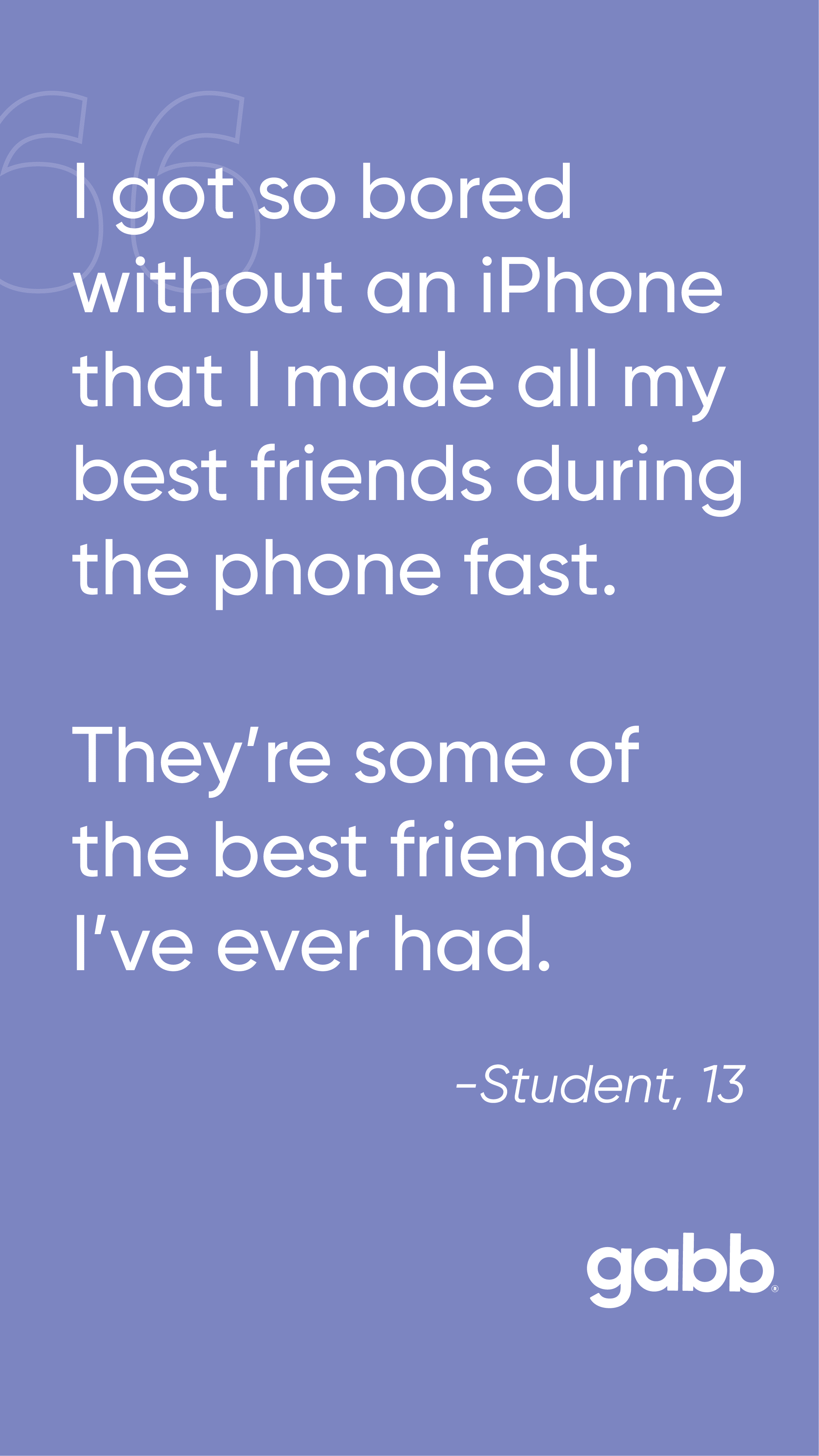
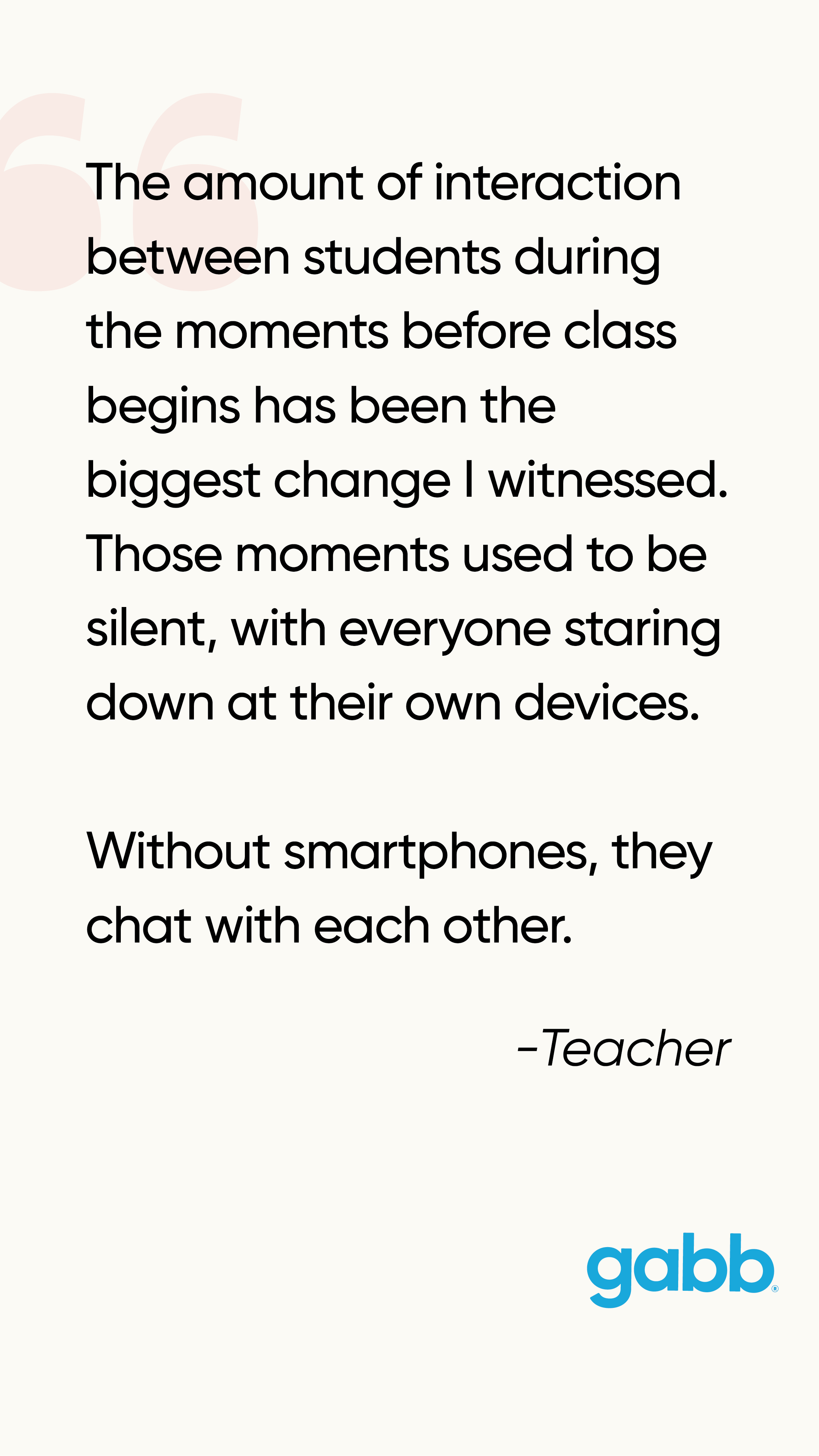

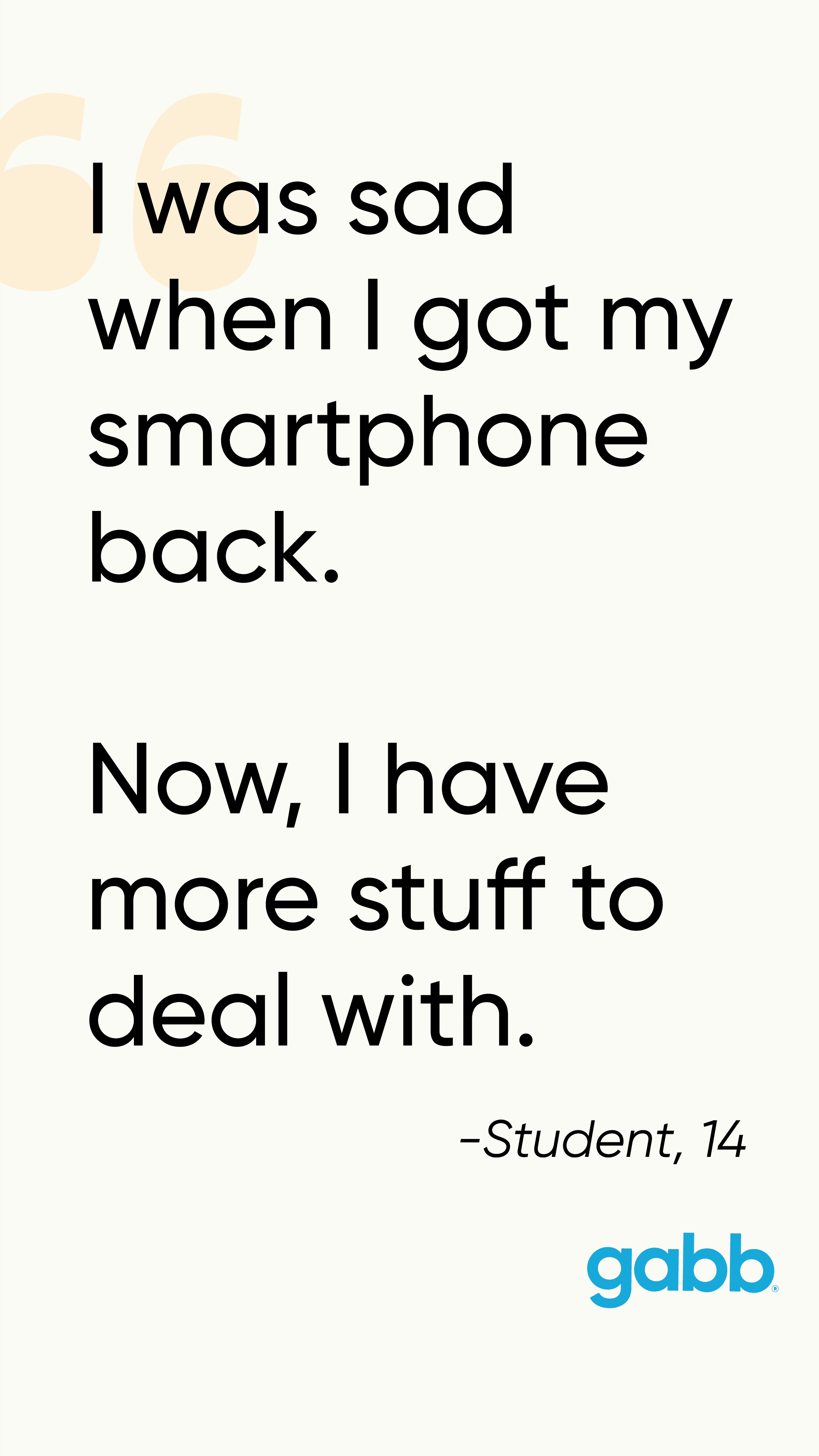





Success!
Your comment has been submitted for review! We will notify you when it has been approved and posted!
Thank you!